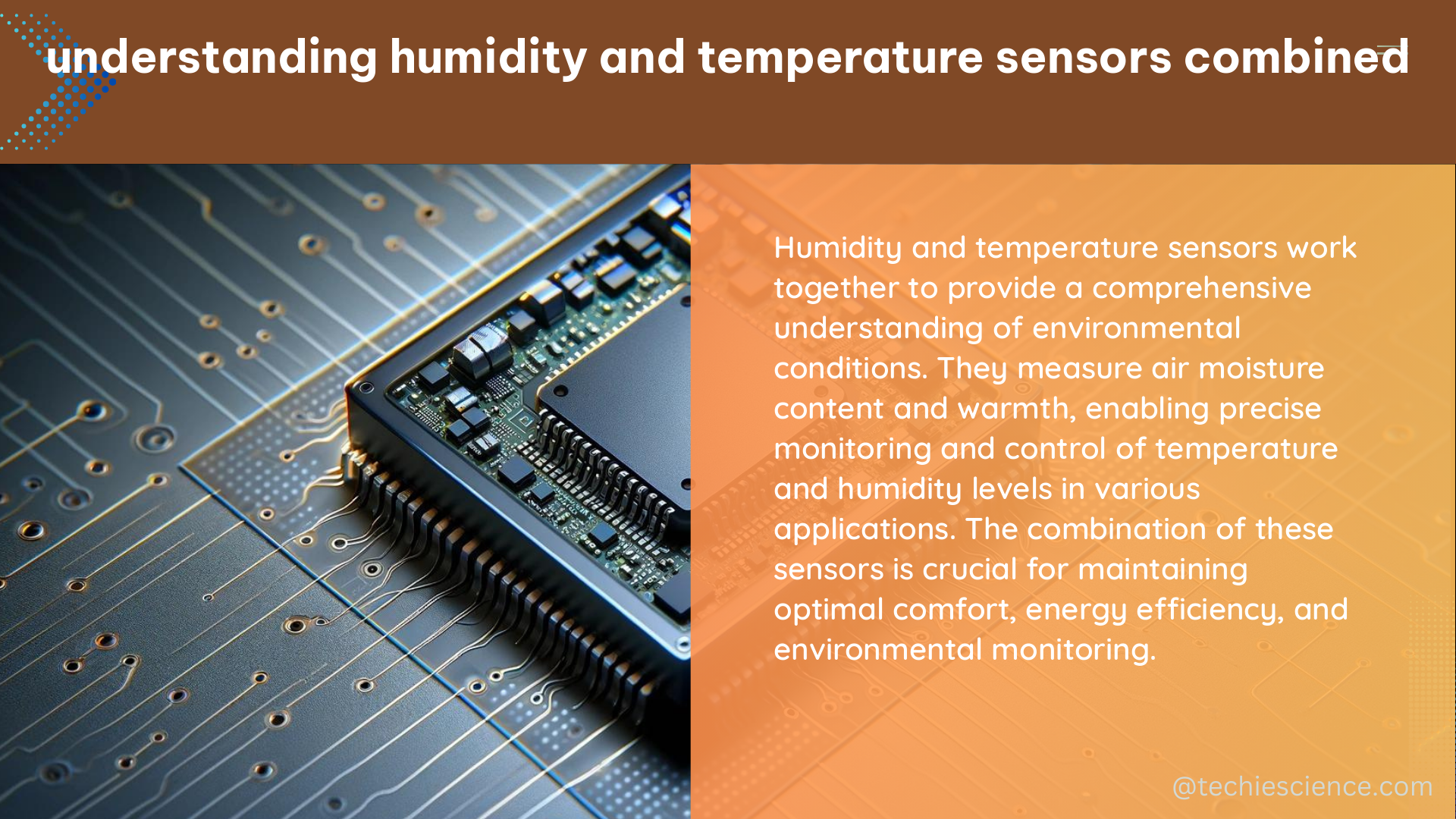Humidity and temperature sensors are essential components in various applications, from meteorological observation to indoor environment monitoring, agriculture, food storage, and constant temperature and humidity equipment. These sensors provide real-time data, enabling users to make informed decisions based on the current environmental conditions. Understanding the combined effects of humidity and temperature on sensor response is crucial for accurate and reliable measurements.
Influence of Temperature and Humidity on Sensor Response
Studies have shown that temperature and humidity significantly influence sensor data. When testing the impact of temperature and relative humidity on gas sensors, researchers observed that the sensor response slope changed by around 5% with increasing relative humidity from 15% to 48%. Additionally, the baseline voltage shifted by about 0.1 ppm when the temperature increased from 18°C to 36°C. This change in sensor response highlights the need to include correction methods for the slope and baseline, especially for sensor applications in ambient monitoring with strong diurnal and seasonal cycles of climate conditions.
| Environmental Factor | Observed Impact |
|---|---|
| Relative Humidity (15% to 48%) | Sensor response slope changed by ~5% |
| Temperature (18°C to 36°C) | Baseline voltage shifted by ~0.1 ppm |
To address these environmental influences, sensor manufacturers often incorporate temperature and humidity compensation algorithms into their sensor designs. These algorithms use real-time temperature and humidity data to adjust the sensor output, ensuring more accurate and reliable measurements.
Sensor Placement in Data Centers

In data centers, temperature and humidity sensors are essential for maintaining a safe and consistent climate. The American Society of Heating, Refrigerating and Air-Conditioning Engineers (ASHRAE) recommends a minimum of six temperature sensors per rack, with three placed in the front (top, middle, and bottom) and three in the back to monitor air intake and exhaust temperatures. In high-density facilities, more than six sensors per rack are often used to construct more accurate temperature and airflow models.
The strategic placement of these sensors is crucial for effective environmental monitoring and control. By positioning the sensors at various locations within the rack, data center operators can gain a comprehensive understanding of the temperature and airflow patterns, enabling them to optimize cooling systems and prevent hot spots.
Multiparameter Sensors
For multiparameter sensors, such as pressure-temperature-humidity sensors, it is essential that each parameter be quantified without cross-talk with respect to the others. This requires studying the sensing interaction between pressure-temperature, humidity-temperature, and pressure-humidity.
Pressure-temperature interaction: Changes in pressure can affect the temperature measurement, and vice versa. Manufacturers often incorporate compensation algorithms to account for this interaction, ensuring accurate temperature readings regardless of pressure fluctuations.
Humidity-temperature interaction: Humidity levels can influence the temperature measurement, and temperature changes can affect the humidity reading. Sensor designs must address this interdependence to provide reliable data.
Pressure-humidity interaction: Variations in pressure can impact the humidity measurement, as changes in air density can affect the water vapor content. Sensor calibration and compensation methods are necessary to decouple the pressure and humidity signals.
By understanding and addressing these cross-talk effects, multiparameter sensors can provide more accurate and reliable data, enabling better decision-making in various applications.
Applications of Combined Temperature and Humidity Sensors
Combined air temperature and relative humidity sensors have a wide range of applications, including:
-
Meteorological observation: These sensors are used in weather stations and meteorological monitoring systems to track environmental conditions.
-
Indoor environment monitoring: They are employed in buildings, homes, and offices to ensure comfortable and healthy indoor air quality.
-
Agriculture: Farmers use these sensors to monitor crop and livestock environments, optimizing growing conditions and preventing crop damage.
-
Food storage: Combined temperature and humidity sensors are crucial in food processing and storage facilities to maintain optimal conditions and prevent spoilage.
-
Constant temperature and humidity equipment: These sensors are integral components in HVAC systems, incubators, and other equipment that require precise environmental control.
By providing data on both temperature and humidity, combined sensors offer a comprehensive understanding of the environmental conditions, enabling users to make informed decisions and take appropriate actions.
Conclusion
Understanding the combined effects of humidity and temperature on sensor response is essential for accurate and reliable measurements. Proper sensor placement, correction methods, and multiparameter sensor design are crucial in ensuring data quality and contributing to better decision-making in various applications.
Reference:
– Influence of Temperature and Relative Humidity on Gas Sensors
– Temperature Sensor Placement in Data Centers
– Multiparameter Sensor Design
– Assessment of Humidity and Temperature Sensors
– Combined Air Temperature and Relative Humidity Sensor Applications

The lambdageeks.com Core SME Team is a group of experienced subject matter experts from diverse scientific and technical fields including Physics, Chemistry, Technology,Electronics & Electrical Engineering, Automotive, Mechanical Engineering. Our team collaborates to create high-quality, well-researched articles on a wide range of science and technology topics for the lambdageeks.com website.
All Our Senior SME are having more than 7 Years of experience in the respective fields . They are either Working Industry Professionals or assocaited With different Universities. Refer Our Authors Page to get to know About our Core SMEs.